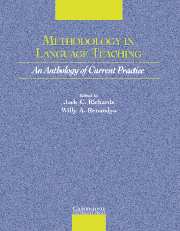INTRODUCTION
Interests in learning strategies began with the publication of papers collectively known as the “good language learner” studies (see Cohen & Weaver, 1998). Since then, hundreds of studies have been generated that look at different aspects of learning strategies and their roles in language learning. In an effort to make sense of the huge database and numerous research findings in this area, Oxford (1990, in Cohen & Weaver, 1998) differentiates learning strategies into the following categories:
COGNITIVE
Cognitive strategies involve the identification, retention, and retrieval of language elements. For example, students may use memory-enhancing strategies (e.g., the keyword method) to help them remember new words.
METACOGNITIVE
Strategies of this type deal with the planning, monitoring, and evaluation of language learning activities. For example, students may develop a plan for monitoring their progress by constantly comparing their current level of proficiency with the course goals outlined in the curriculum.
AFFECTIVE
Affective strategies are those that serve to regulate emotions, attitudes, and motivation. For example, students may read linguistically simplified books to develop a positive attitude toward reading materials.
SOCIAL
These strategies refer to actions learners take to interact with users of the language. For example, students may deliberately seek out opportunities to use the target language with native speakers of the language.
